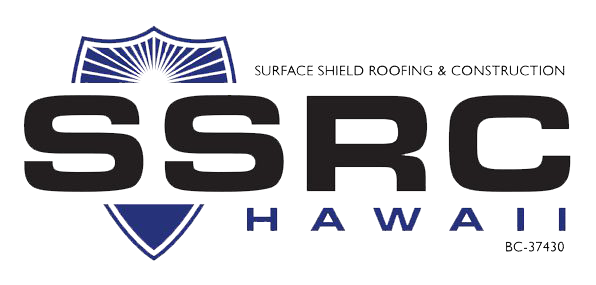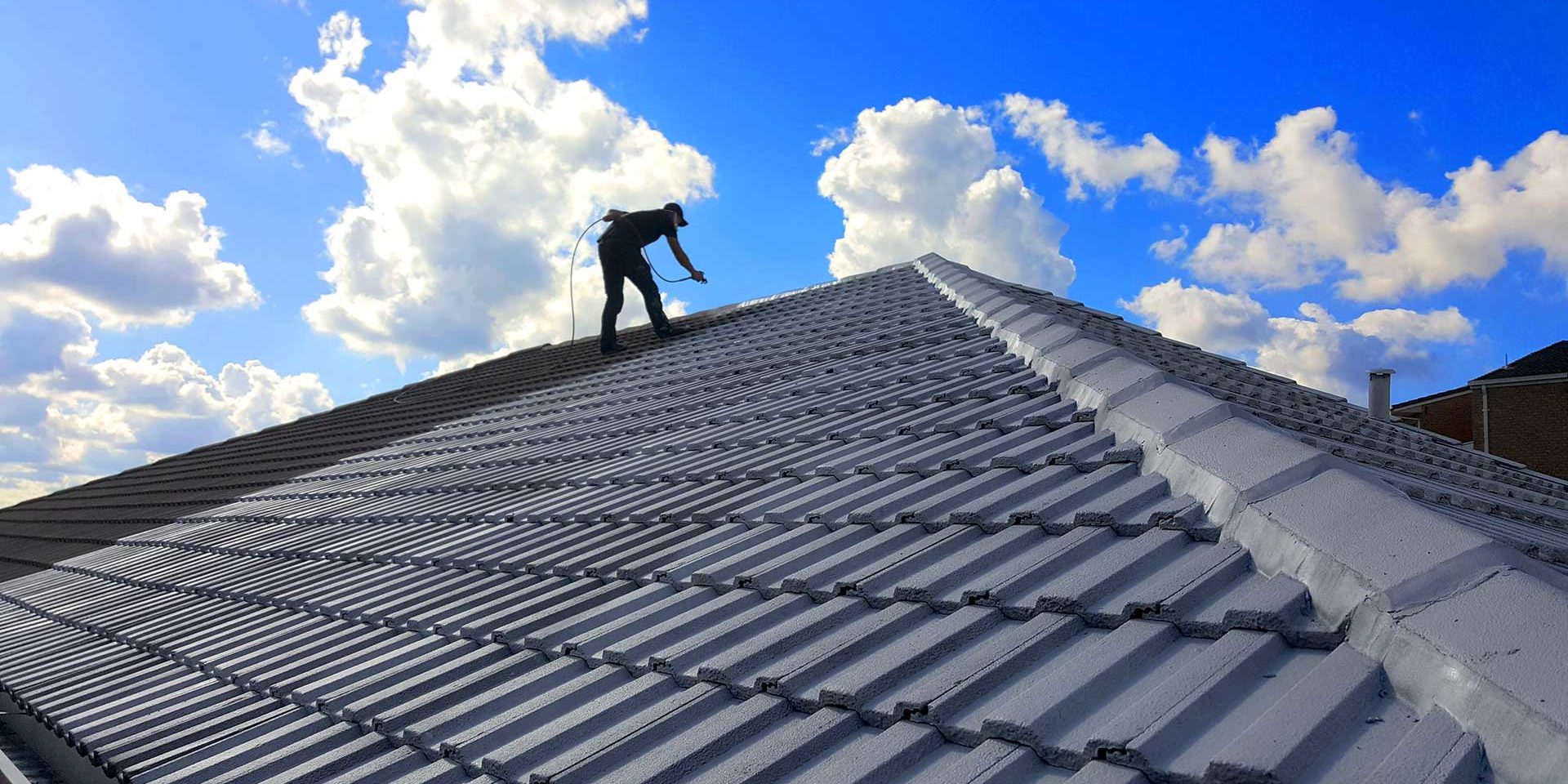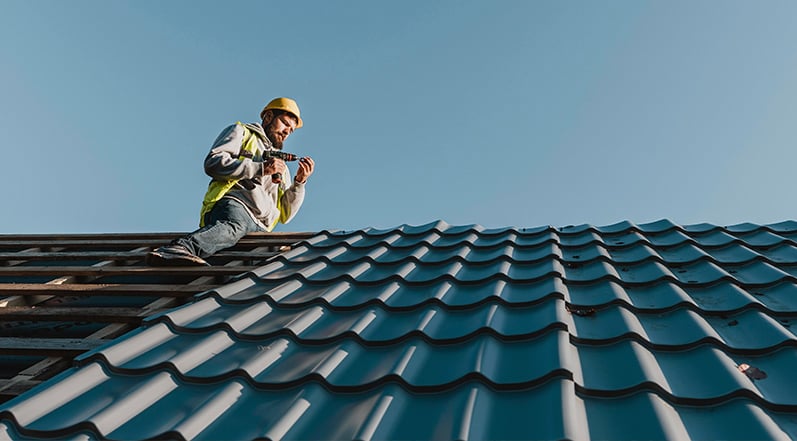Recognizing the Different Kinds Of Roof and Their Advantages
Each roof covering type-- from the affordability of asphalt roof shingles to the long-lasting stamina of steel and the timeless charm of floor tile-- provides distinctive advantages tailored to numerous needs and preferences. As we check out these alternatives even more, a much deeper understanding of each roof covering type's distinct advantages might disclose surprising insights that could affect your decision-making process significantly.
Asphalt Tiles
When considering roof covering choices, asphalt tiles often arise as a prominent option as a result of their balance of cost, sturdiness, and visual allure (honolulu roofing company). These shingles are made up of a fiberglass mat covered with asphalt and granules, providing a durable barrier against climate elements. Their light-weight nature permits very easy setup, making them a recommended option for both property owners and professionals
Asphalt roof shingles are available in 2 main types: three-tab and building. Three-tab roof shingles are flatter and supply a much more conventional appearance, while architectural shingles have a thicker make-up and supply a dimensional appearance. Both kinds come in a selection of styles and shades, allowing property owners to customize their roof covering to enhance their home's style.
One of the vital benefits of asphalt shingles is their cost-effectiveness; they are usually much less expensive than other roofing materials, such as tile or slate. Overall, asphalt shingles stand for a aesthetically attractive and functional roof solution for numerous residential applications.
Steel Roof
Metal roofing has actually acquired substantial appeal among home owners and contractors as a durable and energy-efficient option to standard products like asphalt shingles. Consisting of products such as steel, light weight aluminum, and copper, steel roofs are known for their longevity, commonly long-term 40 to 70 years with minimal maintenance. This remarkable lifespan dramatically decreases the regularity of roofing substitutes, translating to lasting expense savings.
One of the vital benefits of metal roofing is its power effectiveness. Metal reflects solar glowing warm, which can aid lower air conditioning expenses in warmer climates. Furthermore, many metal roof products are created with recycled materials, making them an ecologically friendly choice.
Metal roof coverings are also extremely resistant to serious weather, consisting of high winds, hefty rain, and snow. This resilience minimizes the threat of leaks and various other damage, offering tranquility of mind to home owners. In addition, metal roof is offered in various designs, colors, and coatings, permitting customization to complement any kind of architectural layout.
While the preliminary investment might be higher than traditional roof covering options, the lasting benefits of toughness, energy performance, and low upkeep make metal roof a worthwhile consideration for modern homes.
Ceramic Tile Roof Covering
Tile roof covering provides home owners an unique visual and phenomenal longevity, making it a favored selection for various architectural styles, specifically in warmer climates. This roof product is readily available in a selection of colors, forms, and products, including clay and concrete, enabling for versatile style alternatives that can enhance a home's curb charm.
One of the main benefits of tile roofing is its longevity. With proper maintenance, ceramic tile roof coverings can last upwards of 50 years or even more, outmatching many various other roofing materials. Their fundamental resistance to rot, bugs, and fire additional adds to their charm. Furthermore, floor tile roof coverings can give superb thermal insulation, aiding to regulate indoor temperatures and possibly reducing energy costs.
One more benefit of ceramic tile roof is its low upkeep needs. While setup can be a lot more expensive compared to various other roof types, the financial investment is usually warranted by the long-lasting cost savings on repairs and replacements. Moreover, floor tile roof covering is eco-friendly, as many tiles are made from natural products and are recyclable at the end of their life cycle.
Wood Tiles and Shakes
Wood shingles and drinks offer a natural elegance and heat that can improve the aesthetic of any type of home, making them a popular selection among homeowners that value organic products. These roof options are traditionally made from cedar, redwood, or ache, providing a rustic beauty that complements numerous architectural styles.

Timber tiles are machine-cut, providing a consistent look and smooth surface. In comparison, shakes are hand-split, leading to an extra uneven and textured look. This difference can affect the overall style and character of a home, with trembles frequently lending an extra rugged, natural feeling.
Among the key advantages of wood roof is its superb insulation properties, which can help control indoor temperature levels while lowering power prices. Additionally, wood roof shingles and drinks can be treated with fire retardants and preservatives to improve their sturdiness and resistance to degeneration, insects, and dampness.
However, it is necessary to consider the maintenance needs associated with wood roof covering. Normal assessments, cleansing, and therapy are necessary to extend its life-span. When correctly looked after, wood tiles and trembles can supply a magnificent and enduring roof read this post here solution that boosts any type of building's visual appeal.
Eco-Friendly Roof Options
As environmental understanding grows, home owners are significantly seeking environmentally friendly roof covering options that not just minimize their carbon impact but additionally add to sustainable living. honolulu roofing company. These roofing options are made to lessen environmental influence while boosting power performance and resilience
One prominent choice is steel roofing, which is typically made from recycled materials and boasts a lengthy life-span, decreasing the demand for frequent replacements. Metal roof coverings reflect solar warm, consequently decreasing power costs. One more feasible selection is rubber roof covering, generally made from recycled tires, providing exceptional insulation and durability.
Green roof coverings, which incorporate vegetation and soil, offer natural insulation, assist with stormwater administration, and enhance air high quality. They are especially beneficial in urban areas, helping to mitigate the heat island effect. Additionally, solar tiles are getting grip; they integrate conventional roofing materials with photovoltaic technology, allowing property owners to produce their own electrical power while preserving aesthetic allure.

Final Thought
Asphalt tiles offer an i thought about this affordable alternative with moderate durability, while metal roof offers phenomenal durability and power efficiency. Ceramic tile roofing stands out for its aesthetic allure and resilience, and timber shingles improve insulation yet require thorough upkeep.
